Abstract
During myelography we observed the contrast material in the spinal subarachnoid space while we changed: (1) the intracranial blood volume by CO2 inhalation, hyperventilation, and jugular vein compression; (2) the intra-abdominal and intrathoracic pressure by forced expiration with glottis closed; and (3) the CSF volume by withdrawals and reinjections of fluid. The spinal dural sac enlarges with increases in volume of both intracranial blood and CSF. It partially collapses with reductions in volume of both intracranial blood and CSF. With increases in intra-abdominal and intrathoracic pressure, the thoracolumbar sac partially collapses, while the cervical sac enlarges. From these observations we conclude that the spinal dural sac is a dynamic structure, readily changing its capacity in response to prevailing pressure gradients across its walls. It acts as a reservoir for CSF, which moves to and fro through the foramen magnum in response to changes in cerebral blood flow. By its bladder-like ability to alter its capacity, the spinal dural sac provides the `elasticity' of the covering of the central nervous system.
Full text
PDF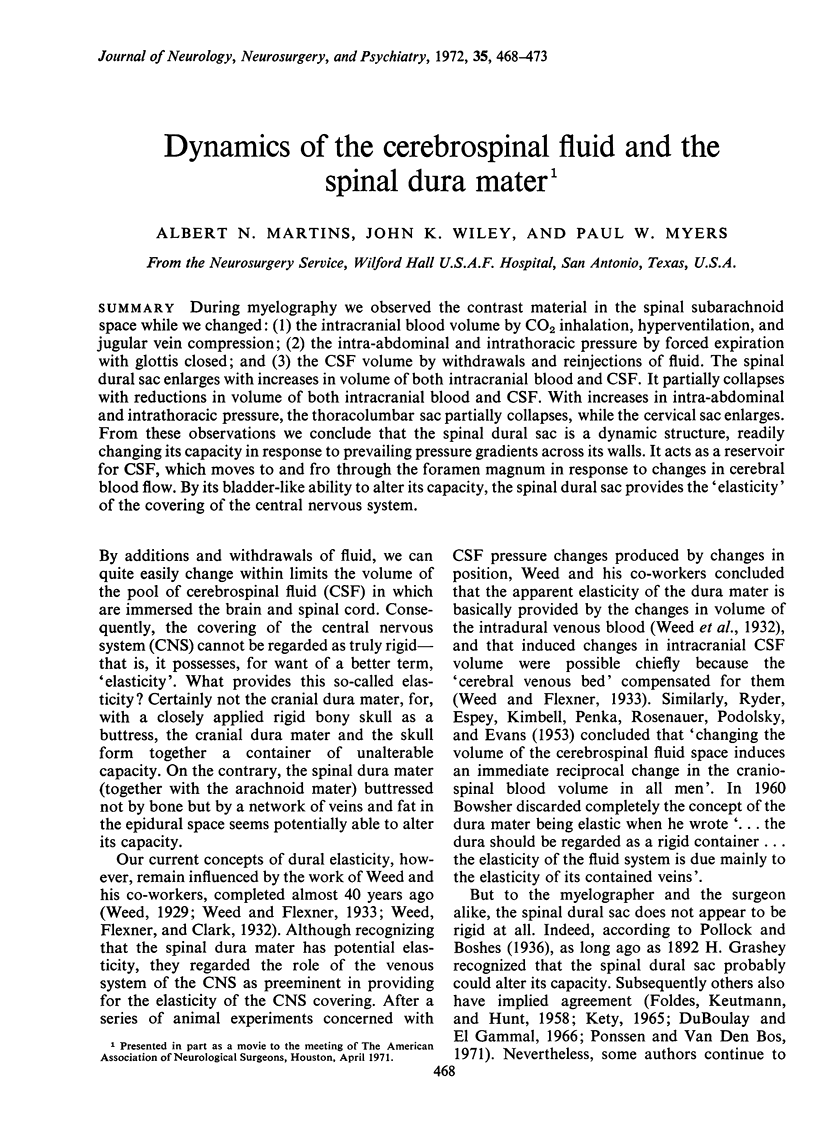
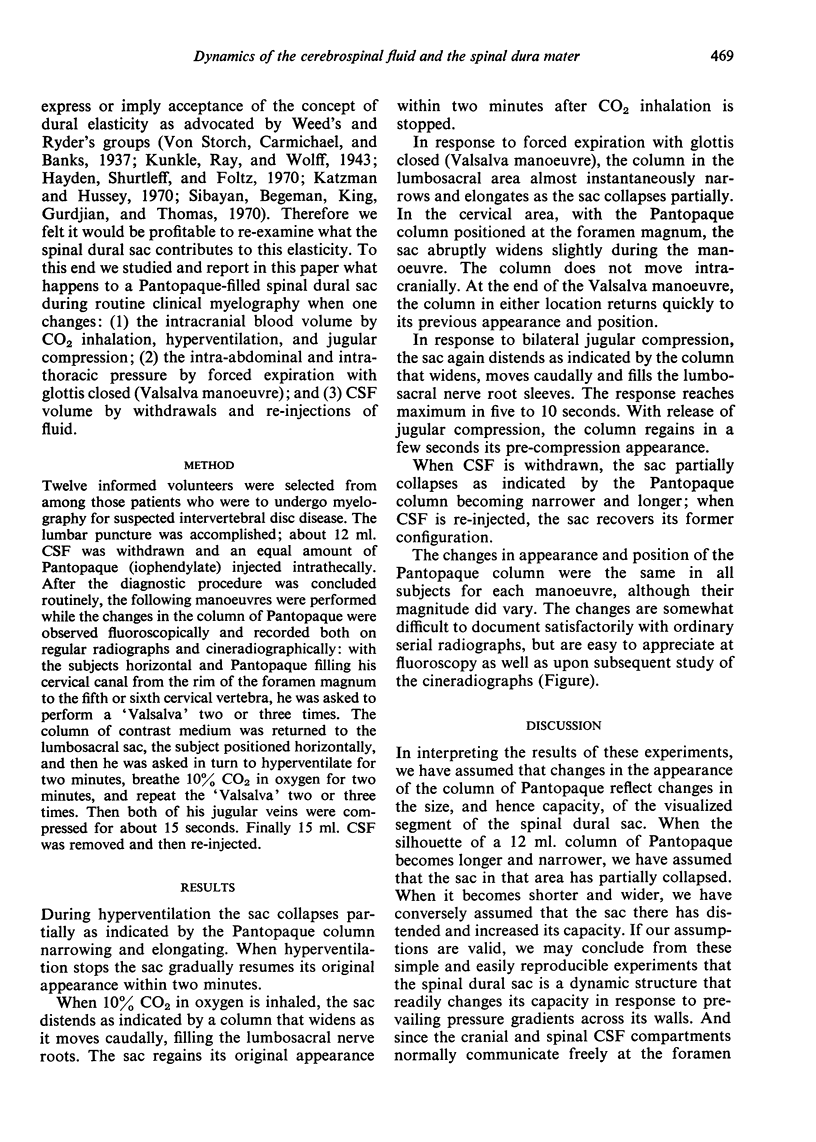
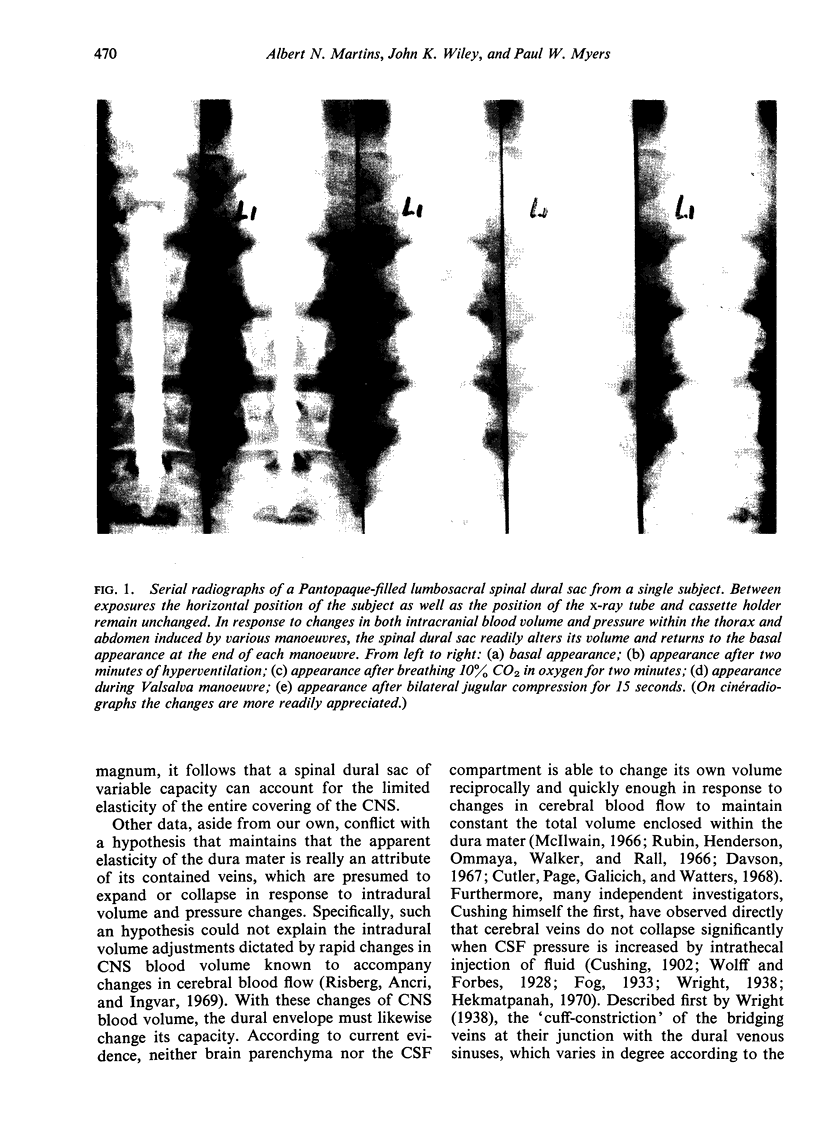

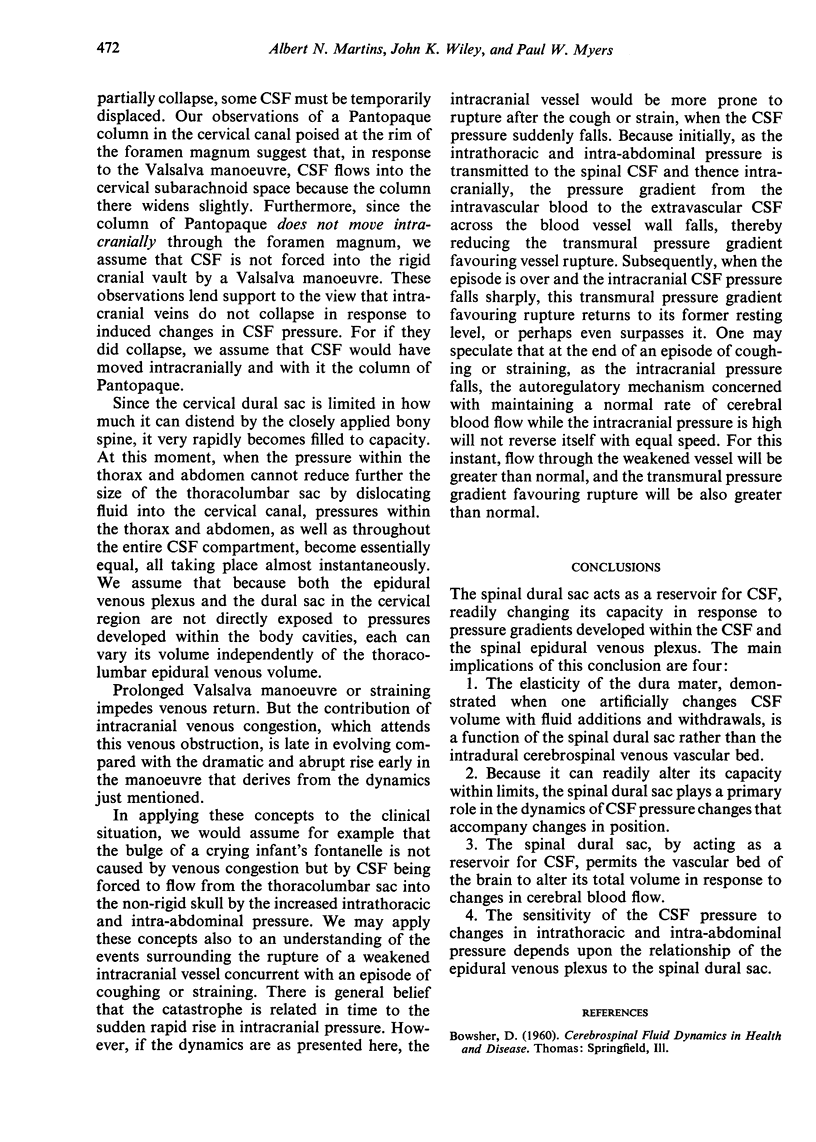
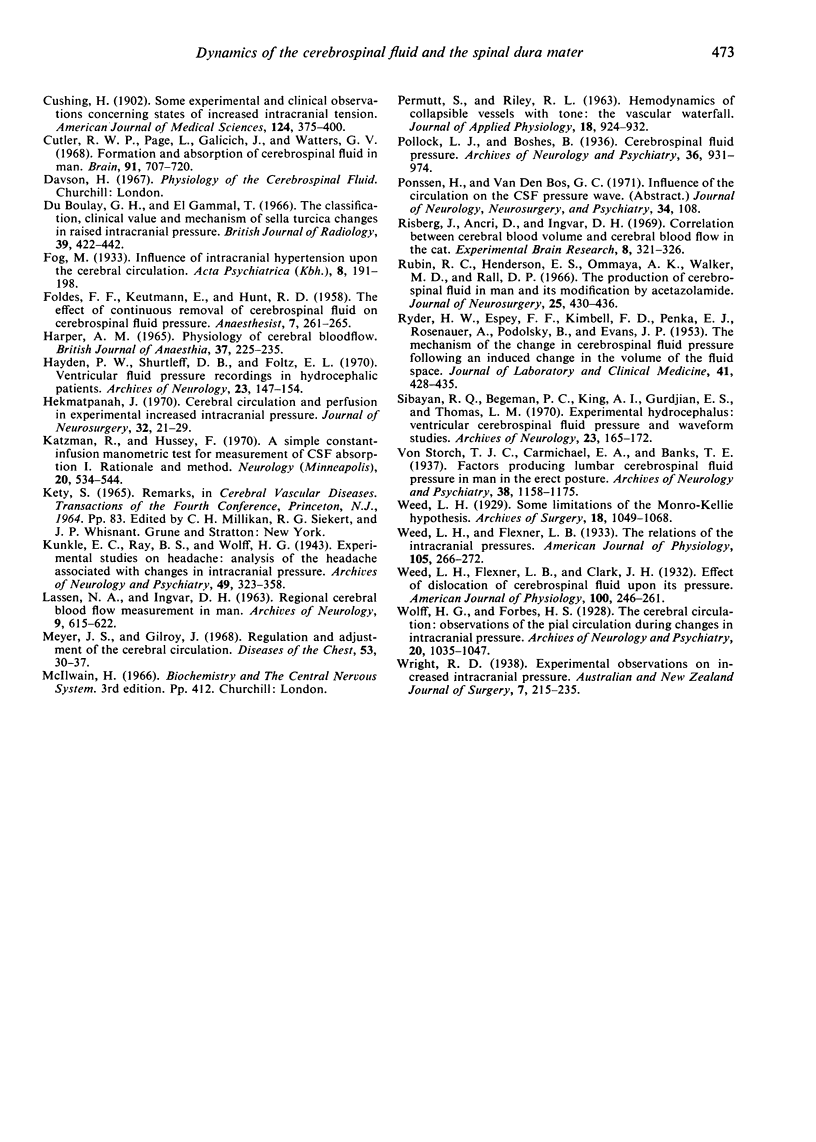
Images in this article
Selected References
These references are in PubMed. This may not be the complete list of references from this article.
- Cutler R. W., Page L., Galicich J., Watters G. V. Formation and absorption of cerebrospinal fluid in man. Brain. 1968;91(4):707–720. doi: 10.1093/brain/91.4.707. [DOI] [PubMed] [Google Scholar]
- Du Boulay G. H., El Gammal T. The classification, clinical value and mechanism of sella turcica changes in raised intracranial pressure. Br J Radiol. 1966 Jun;39(462):422–442. doi: 10.1259/0007-1285-39-462-422. [DOI] [PubMed] [Google Scholar]
- FOLDES F. F., KEUTMANN E., HUNT R. D. The effect of continuous removal of cerebrospinal fluid on cerebrospinal fluid pressure. Anaesthesist. 1958 Sep;7(9):261–265. [PubMed] [Google Scholar]
- HARPER A. M. PHYSIOLOGY OF CEREBRAL BLOODFLOW. Br J Anaesth. 1965 Apr;37:225–235. doi: 10.1093/bja/37.4.225. [DOI] [PubMed] [Google Scholar]
- Hayden P. W., Shurtleff D. B., Foltz E. L. Ventricular fluid pressure recordings in hydrocephalic patients. Arch Neurol. 1970 Aug;23(2):147–154. doi: 10.1001/archneur.1970.00480260053007. [DOI] [PubMed] [Google Scholar]
- Hekmatpanah J. Cerebral circulation and perfusion in experimental increased intracranial pressure. J Neurosurg. 1970 Jan;32(1):21–29. doi: 10.3171/jns.1970.32.1.0021. [DOI] [PubMed] [Google Scholar]
- Katzman R., Hussey F. A simple constant-infusion manometric test for measurement of CSF absorption. I. Rationale and method. Neurology. 1970 Jun;20(6):534–544. doi: 10.1212/wnl.20.6.534. [DOI] [PubMed] [Google Scholar]
- PERMUTT S., RILEY R. L. HEMODYNAMICS OF COLLAPSIBLE VESSELS WITH TONE: THE VASCULAR WATERFALL. J Appl Physiol. 1963 Sep;18:924–932. doi: 10.1152/jappl.1963.18.5.924. [DOI] [PubMed] [Google Scholar]
- Ponssen H., van den Bos G. C. Influence of the circulation on the CSF pressure wave. J Neurol Neurosurg Psychiatry. 1971 Feb;34(1):108–108. doi: 10.1136/jnnp.34.1.108-a. [DOI] [PMC free article] [PubMed] [Google Scholar]
- RYDER H. W., ESPEY F. F., KIMBELL F. D., PENKA E. J., ROSENAUER A., PODOLSKY B., EVANS J. P. The mechanism of the change in cerebrospinal fluid pressure following an induced change in the volume of the fluid space. J Lab Clin Med. 1953 Mar;41(3):428–435. [PubMed] [Google Scholar]
- Risberg J., Ancri D., Ingvar D. H. Correlation between cerebral blood volume and cerebral blood flow in the cat. Exp Brain Res. 1969;8(4):321–326. doi: 10.1007/BF00234379. [DOI] [PubMed] [Google Scholar]
- Rubin R. C., Henderson E. S., Ommaya A. K., Walker M. D., Rall D. P. The production of cerebrospinal fluid in man and its modification by acetazolamide. J Neurosurg. 1966 Oct;25(4):430–436. doi: 10.3171/jns.1966.25.4.0430. [DOI] [PubMed] [Google Scholar]
- Sibayan R. Q., Begeman P. C., King A. I., Gurdjian E. S., Thomas L. M. Experimental hydrocephalus. Ventricular cerebrospinal fluid pressure and waveform studies. Arch Neurol. 1970 Aug;23(2):165–172. doi: 10.1001/archneur.1970.00480260071010. [DOI] [PubMed] [Google Scholar]



